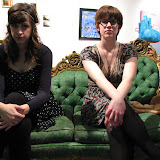It is very interesting to look at the history of photography with regard to its struggle to become respected as an art. Early in its history, photography was considered a strictly documentational view of the world and that an image was an exact representation of reality. But, because artistic photographers wanted so badly to be considered artists, enhancements and manipulations were made to documentary photographs so that they could prove that, just like painting, images have the photographers vision in mind and, just like painting, what you see isn't always what exists. Photographers such as
Jerry Uelsmann focused on a theme of post-visualization. Uelsmann would use multiple negatives to manipulate images in the darkroom.

Jerry Uelsmann
Untitled (1992)What I think makes photojournalism unique is that photographs intended for journalistic use are true to life and have the ability to visually give people stimulating, important information about the world and its inhabitants. However, a lot of people don't necessarily want to see wordly truths so photographs can be composed beautifully, even though the image carries dark tones. As a photojournalist,
James Nachtwey has covered a variety of armed conflicts and social issues which have sparked action and interest in these issues because of the compositional beauty of his photographs.

James Nachtwey
Rwanda, 1994- Survivor of Hutu death camp
James Natchwey
Indonesia, 1998- a beggar washed his children in a polluted canal























